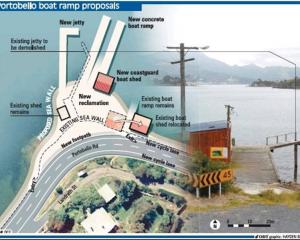Dunedin city councillors voted yesterday to put off a decision on a targeted rate to pay for economic development in the city until next year.
They chose more minor changes that would provide a small reduction in non-residential rates, and a smaller increase in residential rates.
The council's budget hearing considered a change to its differential rating system - the percentage residential, commercial and farmland ratepayers pay of the total rate - after a report that gave two options shifting the balance towards businesses.
Council staff came up with a new option, option 8, to increase residential rates by 4.1%, while decreasing farm and commercial rates by 3.9% and 5.1% respectively.
Cr Dave Cull said having residential ratepayers pay more when the rate was meant to be targeted for economic development was the opposite of what was wanted.
"It looks to me like more research needs to be done," Cr Fliss Butcher said.
Cr Chris Staynes said the issue of a targeted rate needed to be looked at in steps.
The council had to ask if it was to have more expenditure on economic development, was there a sector of the city that would gain more than others? If there was, it needed to decide whether there was a definable sector it could rate, and whether it agreed a targeted rate was a good idea.
Cr John Bezett said the timing was wrong for such a rate, which would send the wrong message to business, and the council should consider it for the next financial year, not now.
Cr Michael Guest said he did not support targeted rates, as the council made non-library users and non pool users pay for those facilities.
In a "village" like Dunedin, everybody benefited from something like economic development.
Cr Andrew Noone said he supported a targeted rate, as did Cr Bill Acklin.
The council voted for more work to be done on the idea, with a report to come back by September, so the rate could be included in the budget for the 2010-11 year, if agreed to.
Deputy Mayor Syd Brown moved a recommendation that would increase the percentage of rates paid by residential ratepayers from 54.4% to 54.9%, decrease non-residential from 39.8% to 39.3%, and leave farmland at 5.8%.
The change would increase the general residential rate by $49 over 10 years, and decrease the non-residential rate by $769 over the same period.
The recommendation was approved unanimously.


